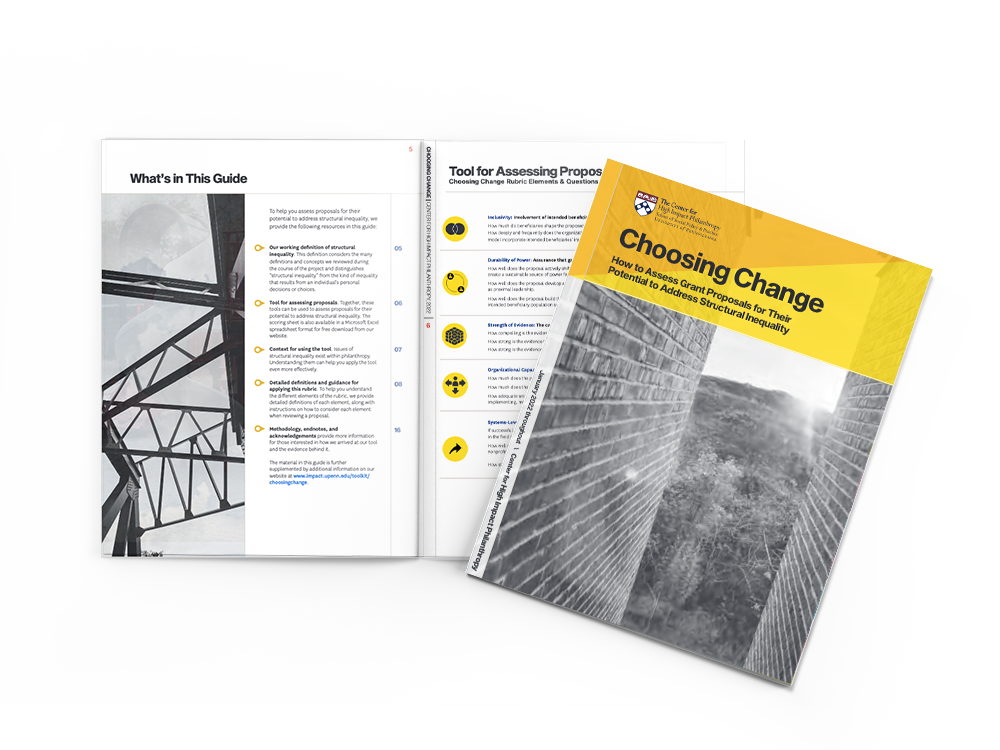What do we mean by structural inequality? The definition we used for this project considers the many definitions and concepts we reviewed and distinguishes “structural inequality” from the kind of inequality that results from an individual’s personal decisions or choices.
Structural inequality exists not only in the areas where professional grantmakers and individual donors seek impact (e.g., health care, education, economic development, environmental impact), but also in philanthropy itself. Understanding the context can help you apply the tool even more effectively.
Philanthropy is the use of private wealth for public good. In the United States, which has the largest organized philanthropic sector, there is a well-documented and perpetually stable wealth disparity along racial and gender lines, and the philanthropic sector is predominantly white-led and -staffed.[6]
This context has three important implications for those using this tool: First, there is the opportunity to be inclusive in who uses this tool and who ultimately decides which proposals receive funding. When the people who evaluate proposals and decide which ones receive funding reflect and are drawn from the beneficiary community, the grantmaking process itself can help address structural inequality.
Second, smaller and/or minority-led organizations may have received limited past support, not because of limitations in their proposals, but because of a structural lack of access to wealth, networks, and philanthropic resources.
Third, each person who reviews a proposal comes to the table with not only their area of knowledge and expertise, but also their perspectives and biases. The background and profiles of reviewers must be considered and communicated honestly and transparently.
For more about philanthropy’s talent pitfalls and how to incorporate more diverse perspectives into your philanthropic activities, see CHIP’s Talent for Giving.
Notes.
[1] Assari, S. (2019, April 4). How Unjust Social Structures Help Some But Harm Others. The Conversation. https://theconversation.com/how-unjust-social-structures-help-some-but-harm-others-113622.
[2] Sørensen, A. B. (1996). The Structural Basis of Social Inequality. American Journal of Sociology, 101(5), 1333–1365. www.jstor.org/stable/2782357.
[3] Gross, T. (2017, May 3). A ‘Forgotten History’ Of How The U.S. Government Segregated America. NPR. https://www.npr.org/2017/05/03/526655831/a-forgotten-history-of-how-the-u-s-government-segregated-america.
[4] Women, Business, and the Law. (Retrieved 2021, September 22).
World Bank. https://wbl.worldbank.org/en/data/exploretopics/wbl_ma.
[5] Amadeo, K. (2021, June 30). What Is Structural Inequality? The Balance. www.thebalance.com/structuralinequality-facts-types-causes-solution-4174727.
[6] Butala, N., Henriques, R., La, H., Ortiz, M., Rosqueta, K. (2021). Talent For Giving: Identifying the People to Help You Do Good. Center for High Impact Philanthropy.

